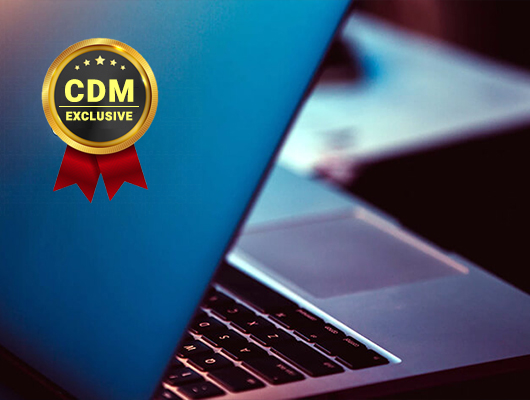Today, Macs are more prone to hacking attacks than PCs. In this article, you’ll find useful tips on how to detect malware on your computer and get rid of it.
By Emma Brighton, a contributor to Cyber Experts and Cybers Guards.
If you still believe that Macs never get viruses, we regret to inform you that this information is outdated and doesn’t correspond to reality. It’s true that Apple computers are much better protected from malware than their PC counterparts. Nevertheless, Kaspersky’s Lab experts claim that approximately 10% of the world’s Macs are affected by a fake Adobe Flash Player updater that is actually malware in disguise. MacDefender malware became such a widespread problem that Apple Support dedicated a special section to it in its online guide. In this article, you will find useful tips on how to identify and erase malware from your Mac before it causes any considerable harm.
The Definition of Malware
Malware is the generic term for all the software that you did not install on purpose and had no intention to use. The most common categories of malware are apps and programs that perform the following operations:
- Download items without asking for permission first
- Lock the screen of your computer
- Sneak your confidential information
- Allow hacker to seize remote control of your device
- Misappropriate administrator privileges
- Use your computer as a shadow bot
- Disguise themselves as legit software
The so-called “potentially unwanted programs” are currently the most widespread type of malware. On average, each Mac becomes a target for 11 of them. PCs, meanwhile, count 5.8 threats on average per each device.
How to Identify that Your Computer is Affected by Malware
These are the most evident symptoms that signalize the presence of malware:
- You notice numerous ads everywhere, not necessarily in your browser
- The computer freezes too often and reboots for no reason
- Unwanted apps download and launch automatically
- Programs update themselves suspiciously frequently, even though you did not enable such an option
If you spot any of these eccentricities, run an antivirus scan immediately.
Where Could I Contract Malware
Hackers often mislead naive users by disguising malware as useful apps such as browser extensions, file extractors, multimedia players, plugins, codecs, or even antiviruses. For this reason, you should download files exclusively from their developers’ sites or from legal shops. BitTorrent, pirate sources, and third-party sites spread malware en masse. And, of course, unknown attachments to emails from suspicious senders often contain harmful programs that install themselves on your Mac discreetly.
How to Cure Your Computer
To get rid of the problem manually, type “Activity Monitor” in the Launchpad. Find the troublesome app in the Processes and quite the process by clicking the “x” button. Then return to the Applications folder, relocate the malware item to the trash bin and empty the bin. After that, restart the system.
This approach has two drawbacks. First, it helps only when you know precisely which app is the culprit. Second, the erased malware might have left traces all over the memory of your device, so the same problem might arise again pretty quickly. To prevent such a scenario, install a powerful antivirus.
The Functionality of Antiviruses
Modern antiviruses are able to detect hundreds of threats, including viruses, malware, phishing attacks, cryptocurrency miners, and so on. After you install such an app, please update it regularly so that it is able to track all new hacking inventions. If malware has already infected your computer, the antivirus will deeply scan all the systems, identify unwanted items and delete them, leaving no dangerous traces behind.
But most important, such software will detect malware before it targets you and wards off its potential attacks. Antiviruses of the latest generation are proactive programs that not only clean your device of harmful components but also free its disk space and boost its productivity.
One essential step that you might need to manually is to delete all of your browser extensions and then reinstall the useful ones one by one. Advertising malware often disguises itself as helpful extensions for diverse purposes.
What to Do If the Mac Still Doesn’t Function Properly
If your antivirus is out of date or you resorted only to manual cleaning, your device might keep breaking down even after you erase the questionable items. In this case, try the subsequent measures:
- Log out of the account you are currently using and log into a new one. Then, do a full system cleanup.
- Save all the necessary files on an external hard drive or cloud storage and restore the computer with the help of the Time Machine. This will bring the device back to the moment when it was still not infected.
- Install the freshest versions of all your apps and programs plus the latest operating system.
Even if you are not a geek, you can complete all of these tasks yourself relying on step-by-step instructions from the internet.
Preventive Measures
Once your Mac is safe and sound, try to stick to precautionary measures while surfing the web next time:
- Cover your webcam
- Replace passwords with passphrases and save them in a credible password manager
- Enable anonymous mode in your browser
- Create a bootable SD card for emergency cases
- When the system starts a dialogue, don’t agree recklessly. Read attentively all the dialogue boxes before pressing OK
Also, learn to tell the real antivirus alerts from the fake ones. It might happen so that you see a pop-up window or a browser page with a warning. It tells you that your device is infected by malware that can be cured exclusively by some advanced antivirus. You hurry to purchase this antivirus following the link from the pop-up window — and this is how hackers get hold of your payment credentials. That’s why you should install only the regular notifications from your antivirus.
Conclusions
Hopefully, the information from this review came in handy and now you know how to detect malware and get rid of it. The most crucial tips are to never download pirated content or legit content from unknown sources, regularly run malware scans, and to keep your antivirus enabled. Today, the malware targets Macs more often than PCs, so you should keep vigilant and systematically upgrade your software.
About the Author
 is a cybersecurity enthusiast and Mac aficionado. She’s passionate about covering topics like Mac cybersecurity, Mac tips & hacks, Mac’s how-to guides. He is a contributor to Cyber Experts and Cybers Guards.
is a cybersecurity enthusiast and Mac aficionado. She’s passionate about covering topics like Mac cybersecurity, Mac tips & hacks, Mac’s how-to guides. He is a contributor to Cyber Experts and Cybers Guards.
Email: [email protected]


